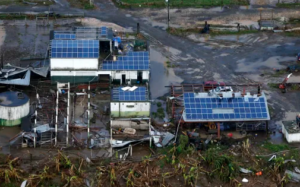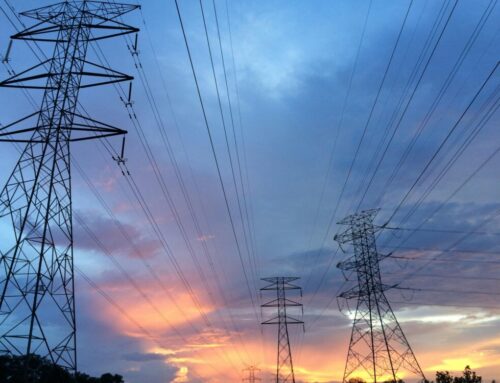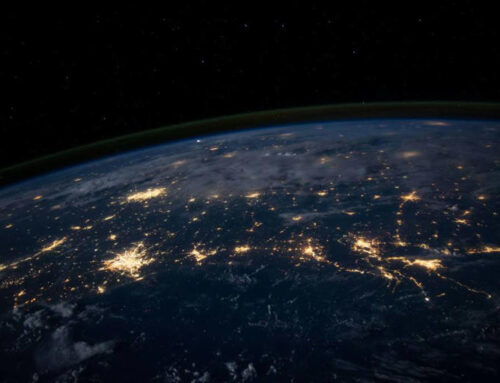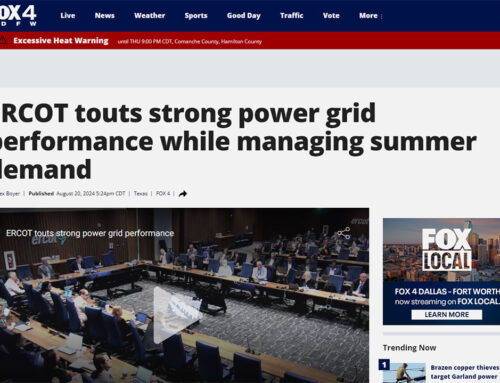Article by Gloria Gonzalez, Kelsey Tamborrino and Catherine Morehouse published on
Solar power withstood the hurricanes that struck Puerto Rico and Florida last month — a fact that could aid the technology’s supporters in lobbying battles around the country.

Hurricanes Fiona and Ian gave solar power its time to shine (yahoo.com)
Hurricanes Fiona and Ian caused catastrophic flooding, knocked out power lines and washed away roads and bridges. But people who could afford solar panels and batteries say those systems kept the lights on during the storms, and even allowed them to share electricity with neighbors left in the dark.
Now, that performance during natural disasters offers ammunition to the solar industry in its lobbying fights with lawmakers, regulators and traditional power companies as renewable energy seeks to accelerate its growing role in the U.S. electricity supply. Such fights have held up solar’s expansion in jurisdictions across the U.S., including in Puerto Rico and Florida.
“I wish we never had to have this proof point,” said Abigail Ross Hopper, CEO of the Solar Energy Industries Association. But she said the hurricanes have shown that renewables paired with battery storage are a reliable form of energy.
It “is not just a theory, but it actually is providing power to people in otherwise darkened areas,” Hopper added.
The two storms knocked out power to 2.7 million customers in Florida as well as the entire island of Puerto Rico, which has more than 3 million residents. (Nearly 12,000 power customers in the state and about 9,000 on the island remained without power as of Sunday night.) Still, much of the grid in both places bounced back faster than it had after some past hurricanes, in part because of efforts in Florida to harden power networks by burying power lines and replacing wooden poles with steel or concrete.
But solar power was especially critical for many residents. One reason: Rooftop panels, coupled with batteries, let people keep their lights and appliances humming during and after the storms, without having to worry about downed power lines or finding fuel for generators.
Hector Jimenez, a field manager with BrightPlanet Solar in Puerto Rico, said the system he had installed at his home “has been working like a charm” before and since Fiona hit the island on Sept. 18. His neighbors relied on diesel to run their generators and started to worry when fuel supplies grew tight. But Jimenez was able to help them out by sharing power from his batteries.
Tampa resident Donald Kirk, a client of residential solar provider Tampa Bay Solar, said he had originally invested in solar and storage last spring to be more sustainable. But after the system kept the power on in his home during Ian, he realized the real benefits of a self-reliant home.
“It was our essential thing when the power went down,” he said.
Some independent energy analysts said the storm could boost interest in solar power in states like Florida — and may play a role in legislative fights about economic incentives for the technology.
“We have long observed an uptick in demand for distributed solar and energy storage among customers that have recently experienced long grid outages,” Timothy Fox, vice president and research analyst at ClearView Energy Partners, said via email. “We expect some Florida customers to look to bolster their supply with onsite systems following Hurricane Ian.”
Solar systems in Puerto Rico held up well under the pressure of Fiona, which primarily pummeled the island with rainfall instead of fierce winds. Power providers indicate that the same appears true in Florida, even after Ian came ashore as a Category 4 storm with maximum sustained winds of 150 mph.
Jason Burwen, vice president of energy storage at the American Clean Power Association, said these on-site solar and storage installations have proven “reliable, through and after these disasters.” That’s particularly important, he said, as storms like the ones in Puerto Rico and Florida tend to take down crucial infrastructure such as wires — even as power plants themselves remain online.
Ben Ollis, a power and energy researcher at the Oak Ridge National Laboratory, said lessons that Puerto Rico learned from 2017’s catastrophic Hurricane Maria led to improved installation techniques to protect solar systems against high winds. He has been working on a community project in the mountainous town of Adjuntas, which used $1.7 million from two nonprofits to create two microgrids with solar and battery storage.
Chris Rauscher, senior director of market development and policy at the company Sunrun, said solar and storage installations helped families in Puerto Rico fare better through Fiona than they had during Maria. Sunrun says its systems provided Puerto Rican residents with roughly 400,000 hours of aggregated backup power during and after Fiona, with the average duration being 100 hours per household.
Following Maria, it was “impressed upon” residents in Puerto Rico that rooftop solar was a potentially cheaper and more reliable alternative, said Tom Sanzillo, director of financial analysis for the Institute for Energy Economics and Financial Analysis, which advocates for a sustainable energy transition. He said many have heeded that call.
In Puerto Rico, “we’re now seeing 2,000 families per month adding solar power to their own homes, independent of any public support, and in fact, actually, in the face of governmental opposition to this,” Sanzillo said. “We expect that to accelerate.”
One factor driving that trend is economics: Puerto Ricans, who rely mostly on energy from four fossil fuel power plants, pay some of the highest electricity costs in the United States. Soaring fossil fuel expenses for an island that imports much of its energy resources have driven a nearly 84 percent rise in average electric rates since January 2021. This on an island where the median income is $21,000, IEEFA noted.
Customers on the island are “sick and tired of having unreliable electricity” and “living with a grid that could be viewed as third world,” Rauscher said. He said those complaints are leading to a “consumer-driven clean revolution.”
But solar energy supporters in Puerto Rico still have a fight on their hands in pushing the territory’s leaders and Washington to give renewable power a more prominent role in the rebuilding of the island’s electrical grid from damage suffered during Maria. […]
The article continues here: https://www.yahoo.com/news/solar-energy-passed-hurricane-test-150000477.html
Article by Gloria Gonzalez, Kelsey Tamborrino and Catherine Morehouse published on





